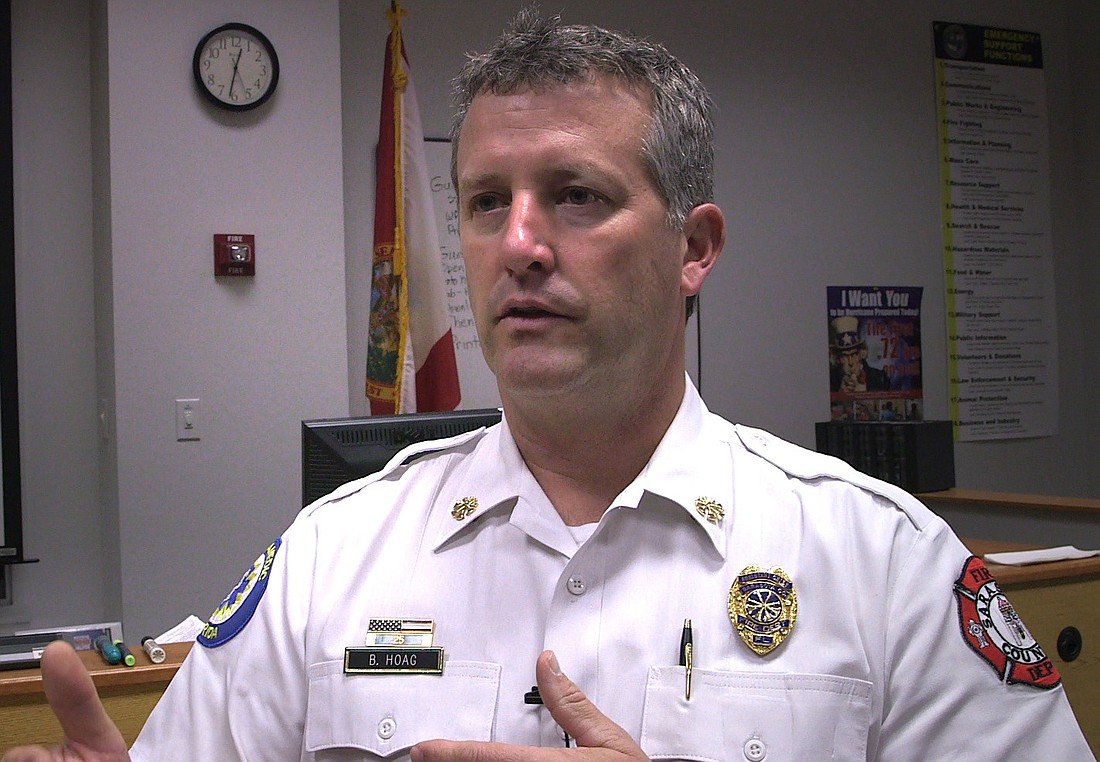- April 22, 2024
-
-
Loading

Loading

Despite a 6% uptick in emergency calls in the last six months, Sarasota County has slashed its emergency responder response times — a divergence that, according to some officials, indicates the effectiveness of a new technology in place at traffic lights throughout Sarasota County.
Sarasota County Assistant Fire Chief Bill Hoag touted the county’s traffic light pre-emption network — in place at 200 intersections — as the reason for the reduction in response times.
The system went operational in June, and is the second-largest countywide network of pre-emption-equipped traffic lights in Florida, and, according to Hoag, “one of the biggest on the East Coast.”
Hoag declined to offer the exact percentage by which response times have decreased, saying he would rather wait until the system has been operational for at least one year before releasing such data. He did report, however, that since the program’s inception last summer, emergency vehicle response times “had definitely decreased” and are continuing to “trend down.”
Traffic light pre-emption consists of a GPS unit aboard an emergency vehicle, which transmits location, turning patterns and velocity data to receivers at stoplights. Signals are then turned green in the direction of travel for the emergency vehicle, and red for other directions. The system is completely automated, unlike earlier versions of traffic light pre-emption technology, which required drivers to hit a button to turn a light from red to green.
Every fire truck and ambulance in Sarasota County is now equipped with the required GPS unit. The Sarasota County Sheriff’s Office as well as Sarasota County Area Transit (in a limited capacity) are both reportedly seeking to integrate the technology into their vehicles.
Officials identified the 200 most heavily trafficked intersections in the county, mostly along the U.S. 41 corridor, for the initial installation of the network. The system is also integrated with the pedestrian crosswalk signals to avoid mishaps.
“If a pedestrian has hit the button to cross an intersection, then we don’t get pre-emption,” Hoag said, explaining the complexity of the criteria used to allow pre-emption at affected lights. “The holy grail of traffic engineering is pedestrian crossing.”
Another potential benefit of the system, Hoag said, is a reduction in fuel and maintenance costs for emergency vehicles, due to the reduced need to brake and re-accelerate at every stoplight.
Despite Sarasota County’s extensive network of pre-emption-equipped traffic signals, the network still only accounts for 200 of Sarasota County’s 268 total stoplights, requiring emergency vehicle drivers to memorize which lights will automatically turn green.
“You still treat every intersection like it doesn’t have pre-emption,” Hoag said. “We have a master list, and these guys know their areas pretty well. It’s pretty easy to stay on top of it.”
The $2.1 million program is paid for by revenue from the countywide penny surtax, which is used to fund capital projects. Hoag would like to expand the system to have pre-emption in place at every stoplight in Sarasota County.
“For every minute lost there is decrease in survivability form a heart attack,” Hoag said. “The size of a fire can double in three to four minutes. But the real advantage of this system is not only response time, but it makes the insertion safer for us. All the opposing traffic is being stopped, and that makes it a lot safer for us and for citizens.”
Currently available traffic signal preemption technology:
Acoustic: Microphones at traffic signals detect the sound coming from emergency vehicles' sirens.
Line-of-sight: An emitter transmits visible flashes of light or invisible infrared pulses at a specified frequency to traffic signals ahead of the vehicle.
Global Positioning System: GPS units determine vehicle speed and position based on satellite signals, and then automatically alert receivers at traffic signals to change the flow of traffic ahead of the arriving emergency vehicle.
Localized Radio Signal: A local, short-range radio signal in the 900 megahertz band is emitted by the incoming emergency vehicle transmitting its location and velocity, which is detected by receivers at traffic signals.
Contact Nolan Peterson at [email protected]